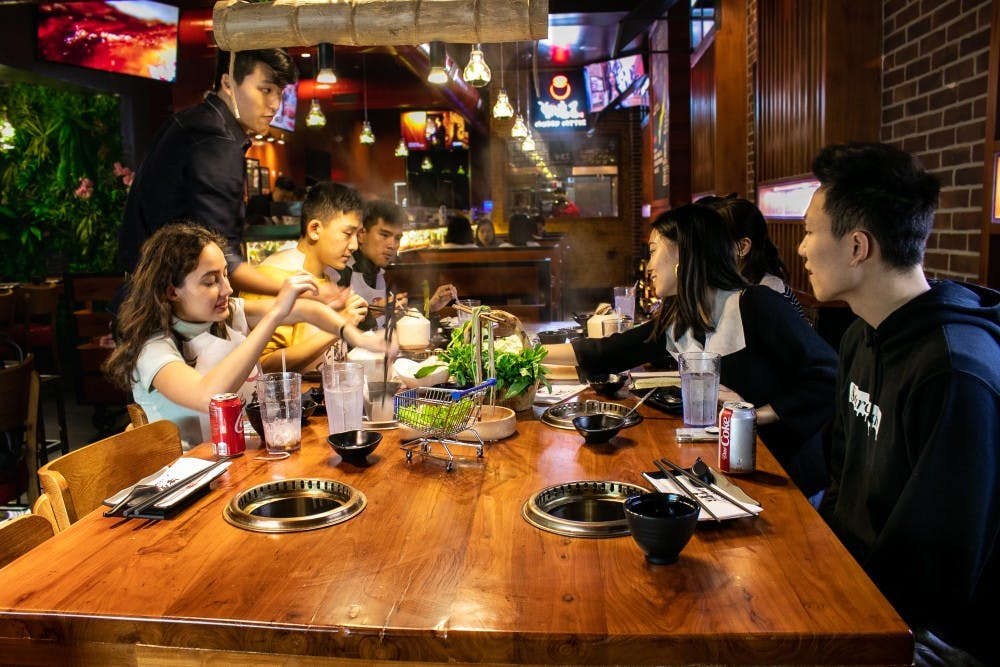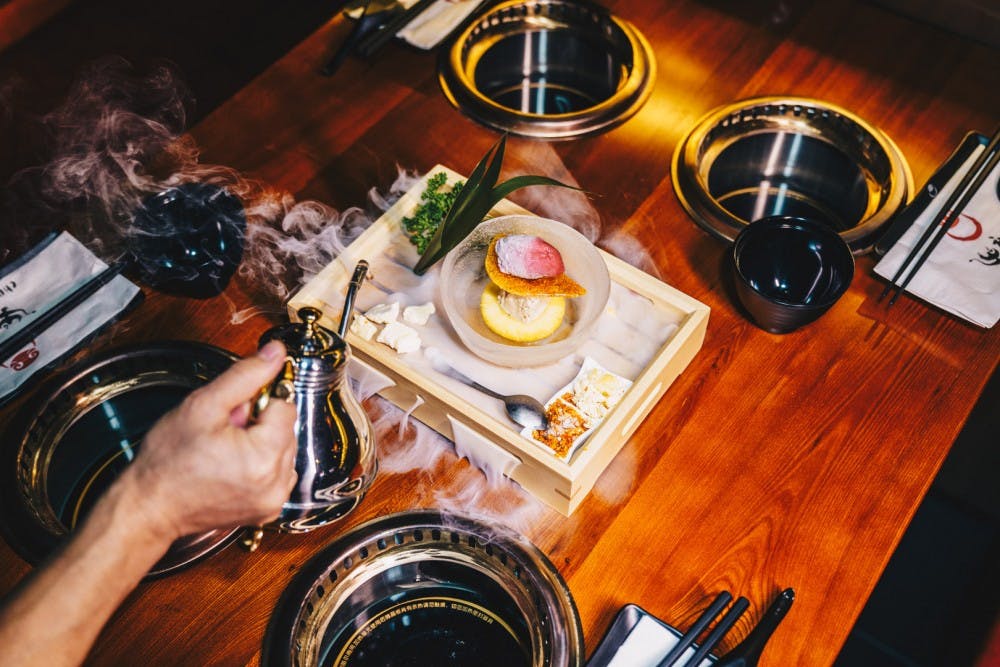The last time we went to eat hot pot, it was chaos. We waited two hours for the restaurant to clear a table for six people, and then walked out of the restaurant reeking of smoke and evaporated broth. We had to flag a waiter down for more boiling water for our soup, and practically had to beg for seasoning recommendations.
A block away from that cursed restaurant is Chubby Cattle. At the corner of 10th and Race, the restaurant is nestled square in the middle of Chinatown. Walk in, and you’ll see bamboo wallpapering the space. Edison bulbs hang from a tiered bamboo lighting fixture over our table: an East–meets–West Elm chandelier. A dazzling LED sign shouts “CHUBBY CATTLE” from an exposed brick wall.
Hotpot is a way of cooking that’s thought to have originated from Mongolia roughly a thousand years ago. In more recent times, it’s become a communal, no–fuss eating experience. You sit around a table with your friends and boil ingredients in a vat, with everything entirely provided for you.
Chubby Cattle wants to revolutionize this latest iteration of hot pot: the restaurant’s goal is to “mix a 1000–year old tradition with high–tech,” according to partner David Zhao (W '19). The Philadelphia restaurant is the chain’s fourth location, and there’s a chalkboard that proudly advertises the location's ties to Penn—frat letters and alum names are etched into the wall.
It’s in the details: vacuums studded in each table suck out the smoke from each pot so customers don’t leave the restaurant dreaming of dry cleaning. A conveyor belt loops around the center of the restaurant, delivering hot pot ingredients. And of course, you can’t miss the maglev train that spits out hot food from the kitchen, straight–to–consumer.

Photo courtesy of Chubby Cattle
The gustatory experience is a surprisingly educational one. The menu details each dish in both Chinese and in English. A waiter explains the philosophy of “marbling” meat, which explains the white strips of fat that pattern the cuts. And with each dish that arrives comes with it a detailed explanation of flavor profile and ingredient sourcing. The A5 Wagyu beef, we learn, is the highest marbling content of beef and imported from Japan, which makes Chubby Cattle one of the few Wagyu–certified restaurants in Philadelphia.
And what presentation of the food: we order quail eggs that come in a tiny shopping cart, eliciting a warranted amount of squealing. The noodles—green tea, tomato, and purple yam flavored—dangle from a delicate structure made of chopsticks. The meat, rosy and perfect, is arranged in a bouquet that blooms by order of cut of meat. Our vegetables come to us decorated in a wooden basket. Damn it, we order a sushi dish that was presented in a puff of liquid nitrogen smoke from beneath a bell jar.
We came out of that meal with questions. How can beef melt in your mouth? Beef is a solid meat. So how was all the Wagyu at Chubby Cattle so damn buttery? Why does the produce that I’m buying taste nothing like the crispy goodness of the cabbage at the restaurant? How can noodles possibly be that doughy? Why are we turned on after that meal (was it the carnal videos of the head chef massaging flecks of salt into juicy slabs of beef)?
So listen to me: go to Chubby Cattle.

